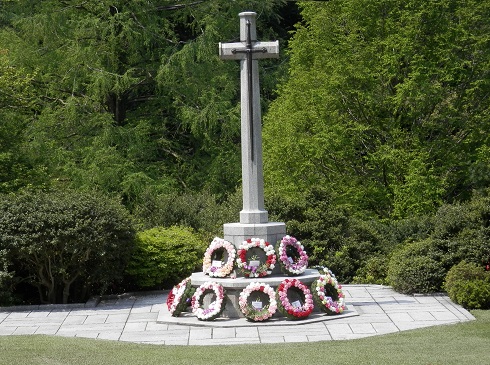ANZAC Day, Commonwealth War Cemetery, Hodogaya, Japan
They gather at dawn in cities and hamlets, town and country as one, across Australia, New Zealand and around the world. At small obelisks containing just a few names or at elaborate marble and granite memorials honouring thousands. They come, too, to the Commonwealth War Cemetery at Hodogaya on the outskirts of Yokohama every year on 25 April to commemorate those Australians and New Zealanders who sacrificed their lives in the Great War, including the Gallipoli Campaign in Turkey, and those who fell on land, sea or in the air in all wars which followed, Hodogaya may be inaccessible at dawn, but the annual 9.00am ANZAC Day Service, hosted alternately by the Australian and New Zealand embassies, unites all attending Aussies and Kiwis with their fellow countrymen at home and abroad in offering thanks to those who bequeathed to us, as expressed lyrically, "The Gift of Years".
ANZAC stands for Australian and New Zealand Army Corps, which was established in 1914 from the amalgamation of the Australian Imperial Force and the New Zealand Expeditionary Force stationed in Egypt. The Corps landed at ANZAC Cove (Ariburnu) on the Aegean coastline of the Gallipoli Peninsula on 25 April 1915, but the eight-month campaign to gain control of the strategic Turkish seaways was a military disaster, resulting in more than 100,000 Allied casualties. Estimates of British and French fatalities vary widely, but are generally accepted as not less than 21,000 and 10,000 respectively, exceeding Australian fatalities which numbered 8,709, New Zealanders, 2,721 and Indians, 1,358. Many have no known grave. Both sides fought to a standstill until the Allies withdrew in mid-December, a game of cricket providing cover for the Diggers. It has been estimated that about 87,000 Turks died defending their homeland from the landing, with overall Turkish casualties amounting to almost 250,000.
Yet from this debacle was born the ANZAC spirit of courage, endurance, equality and mateship. In both ANZAC nations, it endures today, in conflict, in peacekeeping, in reconstruction and in times of natural disaster, such as bushfire, cyclone, earthquake or flood. For the victors as well, the campaign marked a decisive moment in Turkish history, instigating its national revival. The Turkish hero of Gallipoli, Mustafa Kemal Ataturk, Commander of the Turkish 19th Division during the Gallipoli Campaign and who later became the founding President of the Turkish Republic embraced his former enemies in his 1934 Ode, which is engraved on a memorial at ANZAC Cove dedicated to the fallen of both sides. Along with Laurence Binyon's Ode, "For the Fallen", it reminds us on this day of reflection that those who fell on distant shores will never be forgotten and that ANZAC Day represents a repudiation rather than a glorification of war, a path to peace and friendship as well as a recognition of national identity.
Kemal Ataturk's Ode
You, the valiant heroes who have shed their blood on this soil.
You are now lying in the soil of a friendly country.
May you rest in peace.
You are side by side with our dear Mehmets.
You, the mothers who sent their sons from countries afar, wipe away your tears.
Your sons are now in our midst, and they are sleeping in peace.
Having lost their lives on this land, they have become our sons as well.
Following the ANZAC Day Service at Hodogaya, a small remembrance service was conducted in the cemetery's Post War Section dedicated to WOII Ray Simpson, VC, DCM, one of Australia's most decorated war heroes who died in Tokyo in 1978. A World War II, Korean War and Vietnam veteran, he lived in Tokyo with his wife Shoko and worked at the Australian Embassy as a security guard. He was awarded the Victoria Cross for repeated acts of personal bravery and conspicuous gallantry in battle in Kontum Province, Vietnam in 1969.

ANZAC Day 2014, New Zealand Cross of Sacrifice, Commonwealth War Cemetery, Hodogaya, Japan
Please click a photo in our gallery below to enlarge it.
Error loading Partial View script (file: ~/Views/MacroPartials/rblGallery.cshtml)